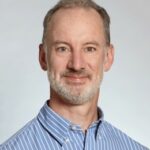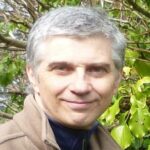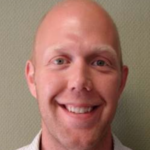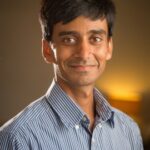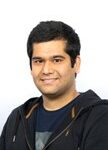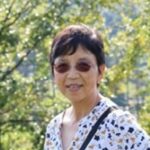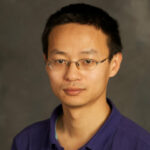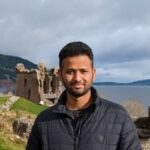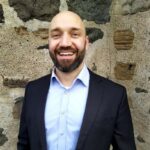ESB 2024 interactive pre-courses are mainly addressed to graduate students, post-docs, and young researchers.
Date: Sunday 30th June, 2024
Place: Edinburgh International Conference Centre (EICC)
Registration for pre-courses is needed.
Duration: Each pre-course will last 150 – 210 minutes.
ESB 2024 PRE-COURSES
Despite ISB recommendations aiming to standardise the reporting of kinematic signals, a lack of consensus around joint coordinate frame definitions remains. An approach capable of accommodating different axis methods and reconciling these differences in frame orientation and position is therefore crucial. In this workshop, we present REFRAME (REference FRame Alignment MEthod), an approach capable of providing kinematic patterns that can be reliably compared without requiring exact knowledge of the different segment frame definitions. REFRAME can thus enable the consistent interpretation and comparison of joint kinematics derived using different approaches and collected in different labs.
Date: 30 June, 2024, 12:30 – 15:00
Digital Image Correlation (DIC) is a technique based on the recording of images of the surface of a test object exhibiting a contrasted patern of grey levels. Images are recorded either with one (2D) or two (Stereo) cameras and the algorithm processes the images for deformation. This provides thousands of individual displacement values at the studied surface. This can then be used to identify material behaviour, validate numerical models, explore material heterogeneities. This course aims a providing a primer of DIC to this audience to help potential users identify potential areas of use.
Date: 30 June, 2024, 15:30 – 18:00
Machine learning is a valuable tool in tackling a wide variety of problems, including those in computational biomechanics. This pre-course will provide a comprehensive introduction to the basics of machine learning tools and their application in computational biomechanics. The course will cover three topics: 1) constitutive modeling using Gaussian processes, 2) deep learning for image segmentation, and 3) physics-informed neural networks. For each topic, the underlying theory will be complemented with hands-on exercises in Python. The knowledge and experience will help researchers use advanced machine learning tools to improve and automate their computational biomechanical analysis.
Date: 30 June, 2024, 09:00 – 12:30
The course will primarily concentrate on establishing the fundamentals of biomechanics and constitutive modeling within biological tissues. It will lay the groundwork for understanding tensor algebra, continuum mechanics, and nonlinear elasticity, progressing to the study of constitutive modeling in biological solids. Additionally, the course will touch on topics such as computational methods, growth, and remodeling, with a consistent emphasis on theoretical analysis and mathematical modeling integrated into the curriculum.
Date: 30 June, 2024, 09:00 – 11:30
Hard tissues are fascinating materials that are found in very different contexts. Bone tissue, for example, was amongst the first investigated tissues in biomechanics. However, there remain a number of clinical challenges due to skeletal diseases that affect millions of patients worldwide. Cold-water corals on the other hand are vitally important to sustain marine biodiversity but are threatened by ocean acidification, desoxygenation, and rising water temperatures.
We use these seemingly disparate example tissues to illustrate how constitutive models across several length scales can be developed and used to address emerging research questions. We will also give an overview of computational and experimental methods that are helpful in developing such models.
Date: 30 June, 2024, 15:30 – 18:00
Sunday 30th June
Background
Kinematic analysis involves calculating signals from optical or inertial datapoints to represent the relative movement of joint segments. The exact choice of local segment frame orientation and position in a bone segment has been shown to drastically influence the shape and magnitude of the associated kinematic signals, making the consistent interpretation of the underlying joint motion a challenge. Despite ISB recommendations aiming to standardise the reporting of these signals, a lack of consensus around joint coordinate frame definitions remains. An approach capable of accommodating different analytical methods and ultimately reconciling these differences in frame alignment, while ensuring consistent interpretations, is therefore crucial.
In this workshop, we present REFRAME (REference FRame Alignment MEthod), an approach to minimise cross-talk between axes of a movement, and thereby provide kinematic patterns that can be reliably compared without requiring direct knowledge of the relative poses of the different segment frames. In this manner, REFRAME can enable the consistent interpretation and comparison of joint kinematics derived using different approaches and collected in different labs.
Content and learning objectives
1. Increase awareness of the substantial effect that even minor differences in reference frame orientation and position have on the shape and magnitude of kinematic signals, and highlight why it is essential that researchers consider these effects before concluding that two sets of kinematic signals that look different actually represent different underlying joint motion.
2. Explain how the REference FRame Alignment MEthod (REFRAME) can be used to remove artefact caused by differences in frame alignment and account for such potential inconsistencies in motion analysis – and thereby provide researchers with the tools necessary to reach more robust and reproducible conclusions regarding joint kinematics.
Structure and duration:
Part I – Introductory Lecture
a. Introduction to the problem (Prof. Dr. William R. Taylor)
b. Method explanation (Adrian Sauer)
c. Practical implications and examples (Ariana Ortigas Vásquez)
Part II – Q & A Panel (All)
Part III – Hands-on application session with own data (Adrian Sauer and Ariana Ortigas Vásquez)
Potential attendees of this pre-course are all researchers working with kinematic signals to represent joint motion. Since the method can be ubiquitously applied to nearly all joint kinematic data, the approach is of interest to engineers, researchers, and clinicians alike.
For active participation in Part III of the workshop, participants should have:
• Laptop
• Matlab License
• Optimization Toolbox
Prof. Dr. William R. Taylor, Laboratory for Movement Biomechanics, ETH Zürich
William (Bill) has been Professor of Movement Biomechanics at ETH Zürich, Switzerland, since 2012. His research focuses on the study of kinematics and kinetics in healthy, reconstructed and replaced joints. Recent laboratory developments include the construction of a unique tracking dual-plane fluoroscope for the accurate assessment of knee joint kinematics throughout complete cycles of dynamic activities of daily living.
Ariana Ortigas Vásquez, Doctoral Candidate (LMU Munich), Aesculap AG, Tuttlingen, Germany
After obtaining a Bachelor degree in Biomechanical Engineering from Stanford University, Ariana completed her Master at ETH Zürich, during which she carried out practical work at the Schulthess Clinic and Aesculap. Currently part of the R&D department at Aesculap, she is pursuing her PhD working on the development of REFRAME, including its clinical, industrial, and research applications.
Adrian Sauer, Research Engineer & Postdoctoral Researcher, Aesculap AG, Tuttlingen, Germany
Currently a research engineer in the R&D department at Aesculap, Adrian holds multiple Bachelor and Master degrees from the KIT and FernUni Hagen (in Mechanical Engineering, Economics, and Mathematics). His PhD explored the (bio)mechanics of the patellofemoral joint. Adrian is especially interested in connecting methods from different fields to gain value for biomechanics
Sunday 30th June
Background
Digital Image Correlation (DIC) is a technique based on the recording of images of the surface of a test object exhibiting a contrasted pattern of grey levels. Images are recorded either with one (2D) or with two (Stereo) cameras and the DIC algorithm matches patterns of grey levels between the reference and deformed set of images. This provides thousands of individual displacement values at the surface of the studied object, which can then be used to derive strain, acceleration, etc. This can in turn be used to identify the material behaviour of the tested material, validate a numerical model, explore material heterogeneity etc. DIC is gradually becoming a standard tool in engineering but it seems that its uptake in the biomedical / bioengineering sector has been slower. This course aims at providing a primer of DIC to this audience to help potential users identify potential areas of use.
Content and learning objectives
The objective is to provide a detailed introduction of Digital Image Correlation to an audience that may have heard about it but never used it. Basics will be covered and examples provided. This will of course only provide an overview and time does not allow for a full hands-on experience. However, this course is based on ten years of experience of MatchID in DIC training and interested attendees will be able to subscribe to a more in-depth course that MatchID organizes on a regular basis. It is worth noting that this course is not designed to advertise the MatchID software, it is platform-independent and reviews the important bricks common to all DIC packages.
Structure and duration
• A few white light imaging basics (30 min)
• Principle of 2D DIC (30 min)
• Principle of Stereo-DIC (30 min)
• Applications
o Material identification (30 min)
o Model validation (30 min)
The course does not require any pre-knowledge of DIC, just basic mechanics (displacement, strain, stress) and mathematics (derivatives, vectors and matrices). Potential attendees range from PhD students seeing a potential for their PhD to staff wanting to engage with DIC on the longer term, including technical officers interested in understand the potential
Prof. Fabrice Pierron
Fabrice is Professor of Solid Mechanics at the University of Southampton. He is a specialist of the integration of image-based deformation mapping (like digital image correlation) with inverse identification (like the Virtual Fields Method) to design the next generation of mechanical tests. He is now also R&D Director at MatchID NV, Ghent, Belgium
Dr. Pascal Lava
Pascal is Managing Director and CTO of MatchID NV (www.matchid.eu). He has 15 years of experience in DIC, including a former academic post at KU Leuven, Belgium. He is the main developer of the MatchID platorm and as such, masters all the aspects of this advanced tool. He also has great experience in DIC training. Pascal is a fellow of the International DIC Society and received the SEM A. J. Durelli Award for outstanding contributions to DIC.
Sunday 30th June
Background
The course is aimed at computational biomechanics researchers who are interested in learning the basics of machine learning and applying them for improving/augmenting the traditional computational modeling approaches. The course will cover three specific application areas and provide hands-on exercises in each of them: 1) constitutive modeling, 2) image processing, and 3) solving differential equations.
The learning outcomes will be:
a) Understand the mathematical foundation of neural networks and Gaussian processes and what it means to train them
b) Learn how to implement and use neural networks and Gaussian processes in Python-based libraries
c) Application of these techniques to three specific problems: a) constitutive modeling, b) classification of images, and c) solving differential equations
d) Learn about challenges and opportunities in this field
Structure and duration
Format of the pre-course will be as follows:
1. Lecture on basics of machine learning (definitions of model, data, input/output space, latent space, loss function, and training algorithm): 15 minutes, Ankush Aggarwal (UofG)
2. Hands-on exercise on linear and nonlinear regression: 10 minutes, Ankush Aggarwal (UofG)
3. Lecture on Gaussian process regression and its application to constitutive modeling: 40 minutes, Ankush Aggarwal (UofG)
4. Hands-on exercise on Gaussian process regression and its use in finite element simulation: 20 minutes, Ankush Aggarwal (UofG)
5. Lecture on convolutional neural networks and its application to image classification and segmentation: 40 minutes, Chaitanya Kaul (UofG)
6. Hands-on exercise on convolutional neural networks: 20 minutes, Chaitanya Kaul (UofG)
7. Lecture on physics-informed neural networks and its application to solving boundary value problems: 40 minutes, Choon Hwai Yap (Imperial)
8. Hands-on exercise on physics-informed neural networks to solve a boundary value problem: 20 minutes, Choon Hwai Yap (Imperial)
The pre-course will be best suited for researchers with a basic background in mathematical/computational modeling, Python-based programming and mechanics. Potential attendees can be researchers at any level, but would likely include primarily PhD students, postdocs, and early career researchers.
Participants are required to have a laptop with internet connection, a Google account to access Google Collab, and basic knowledge of Python and biomechanics.
Ankush Aggarwal
Ankush Aggarwal is a Senior Lecturer in Engineering at the University of Glasgow. His research interests are in computational cardiovascular biomechanics, particularly in vascular and aortic disease diagnosis and treatment. His group develop novel computational methods for biomechanical analysis based on regular clinical data, such as ultrasound and CT images. Recent works include Bayesian inference and Gaussian process modeling for soft tissue constitutive models.
Chaitanya Kaul
Chaitanya Kaul is a Research Associate in Computing Science at the University of Glasgow. His research interests are in deep learning for medical images. He did his PhD in Medial Image Analysis from the University of York working on both binary and semantic segmentation of various imaging modalities (CT, MRI, ultrasound, dermoscopy, fundus imaging to name a few). Chaitanya currently works on semi supervised and weakly supervised learning methods for semantic segmentation of heart images in scenarios where ground truth labels are very limited.
Choon Hwai Yap
Choon Hwai Yap is a Senior Lecturer in Bioengineering at Imperial College London. His research interests are in cardiovascular biomechanics, particularly in embryonic and fetal hearts, where he uses finite element and computational fluid dynamics simulations to understand cardiac mechanics and its effects on function and disease progression. He has recently tapped into Physics Informed Neural Networks to perform biomechanics simulations, and explored strategies to enable real-time simulation results to enhance clinical relevance.
Sunday 30th June
Content and learning objectives
To provide a mathematical foundation for modelling soft tissue mechanics.
Structure and duration
40min Xiaoyu Luo: Basics of Tensor Theory
40 min Nick Hill: Stress – Balance Principles
40 min Namshad Thekkethil: Strain-Energy Functions
40 min Hao Gao: Hyperelasticity and Parameters
Potential attendees of this pre-course are post-graduate students and final-year undergraduate students from a mathematics or a mechanics-related major who are interested in constitutive modelling of soft tissues. Students should have background in general mechanics, calculus, algebra, ODE, PDE and vector calculus.
Xiaoyu Luo
Xiaoyu, a Professor at the School of Mathematics, University of Glasgow (GU), specializes in soft tissue mechanics, cardiovascular modelling, growth and remodelling, and fluid-structure interactions. With over 200 publications in this research area, she’s a Fellow of the Royal Society of Edinburgh, IMechE, and holds a 5-year EPSRC Established Career Fellowship
Dr. Hao Gao
Dr. Gao, a senior lecturer in Mathematics at GU, specializes in mathematical modelling of biological systems, with a focus on multiphysics and multiscale personalized biomechanical models and image-based model reconstructions. With over a decade of experience, he has contributed significantly with 90+ peer-reviewed journal papers and book chapters.
Prof. Nicholas Hill
Prof. Hill in Maths at GU is a leading researcher in mathematical and computational modelling of biological fluid dynamics and physiology. His expertise spans soft tissue mechanics, circulation dynamics, arterial disease, and more. He has developed pioneering models for various applications, including abdominal aortic aneurysms, pulmonary circulation, aortic dissection and pain prediction. Prof. Hill also serves as the Director of the Glasgow SofTMech Centre, overseeing significant EPSRC-funded projects in soft-tissue modeling and emulation.
Dr. Namshad Thekkethil
Dr. Thekkethil is a research fellow whose research focuses on mathematical modelling and numerical methods applied to real-life problems involving mechanics. Specializing in poroviscoelastic soft-tissue mechanics, fluid dynamics, and fluid-structure interaction, primarily within biomechanics and bio-inspired phenomena, he develops efficient numerical methodologies for these problems using finite element and finite volume methods.
Sunday 30th June
Background
Hard tissues are multiscale composites whose scales rarely fulfill the definition of a representative volume element. Porosity is a primary feature to be considered at the different length scales, followed by the arrangement of microstructures that lead to anisotropic elastic properties under physiological loading and inhibit/deflect crack propagation in the case of overloading.
Content and learning objectives
In this pre-course, participants will discover the organizational architectures and multiscale mechanical behavior of two biological hard tissues: bone tissue and cold-water coral skeletons. Following the pre-course, participants will be able to select appropriate constitutive models to address a variety of research questions involving hard tissues.
Structure and duration
Three lectures with one exercise including correction.
• Session 1 will introduce rheological concepts (anisotropic elasticity, viscosity, plasticity), aspects of composition and morphology, notion of representative volume element as well as scale separation, etc. and follow a bottom-up approach to introduce the mechanics
• Session 2 will focus on modelling of cold-water corals
• Session 3 will focus on Modelling of compact/trabecular bone as well as bone ECM
Session 2 and 3 will illustrate how concepts in Session 1 are used to capture the mechanical behavior of the exemplary tissues. This includes how the constitutive elements are defined and equipped with the necessary data.
Potential attendees are interdisciplinary graduate students involved in hard tissue research.
Requirements from the participants: Laptop with internet access
Philippe Zysset
Philippe Zysset obtained a diploma in engineering physics and a PhD in biomechanics at the Swiss Federal Institute of Technology Lausanne (EPFL). Since 2011, he is a professor of biomechanics at the University of Bern, where he pursues his research on multiscale bone mechanics and heads a master program in biomedical engineering.
Uwe Wolfram
Uwe Wolfram obtained an MSc-level degree in mechanical engineering from Chemnitz University of Technology and a PhD from the medical faculty of Ulm University. After positions at University of Bern and Heriot-Watt University he is now Professor at Clausthal University of Technology where he pursues his research on architectured mineralised tissues.


